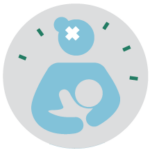State of Our Children
Valley Children’s Healthcare is guided by our mission to continuously improve the health and well-being of children.
With that commitment in mind, Valley Children’s and the Guilds Center for Community Health continues to track our annual list of the most critical issues adversely impacting children’s health and well-being in our region. These issues do not exist in their own “silos,” but rather are interconnected and often interdependent. With our community partners, we continue to understand and equitably address these issues and measure our progress.
Top 10 Issues Facing Our Kids
Continuous healthcare access is essential for children. In the Central Valley, many children miss out on critical physical and mental health services due to inadequate resources and are often sicker by the time their families are able to access care.
Childhood adversity – such as child abuse, exposure to violence, family alcohol or drug abuse and poverty – can have negative, long-term impacts on health and well-being.1 Challenges children face in school, life and ultimately with their health, are often the symptoms of Adverse Childhood Experiences (ACEs) and toxic stress. In our region, ACEs affect almost 20% of children, increasing their risk for long-term health and behavioral issues.
Program Highlight: Adverse Childhood Experiences Screening
In spring 2024, Valley Children’s Olivewood Pediatrics in Merced wrapped up work that resulted in close to $622,000 in grant funding from California’s ACEs Aware Initiative to address ACEs through increased community partnerships, expanded education and broadened screening and referrals.
Through the grant, Valley Children’s helped to:
- identify patients and families at risk for poor health outcomes because of ACEs and toxic stress
- educate providers, staff and community members around ACEs and toxic stress and how to intervene
- connect families to needed resources
- build resilience to break the cycle.
Screening and referrals for ACEs have expanded beyond our Merced practice and are now being implemented across our primary care sites from Merced to Bakersfield.
From Oct. 1, 2023, through Sept. 30, 2024, our primary care practices across the region screened more than 2,600 children for ACEs, with nearly 11% screening positive for high risk of toxic stress.

Physical

Emotional

Sexual

Physical

Emotional

Mental Illness

Mother Treated Violently

Divorce

Incarcerated Relative

Substance Abuse
1 Centers for Disease Control and Prevention. (2020). Preventing adverse childhood experiences. Retrieved from: https://www.cdc.gov/violenceprevention/childabuseandneglect/aces/fastfact.html
Asthma is the most common chronic health condition among children. It is also one of the leading causes of school absenteeism. In Kings County, more than 28% of children have been diagnosed with asthma. Low-income populations, minorities and children living in underserved communities experience more emergency department visits, hospitalizations and deaths due to asthma than the general population.2
2 American Lung Association. Asthma Trends and Burden.
Child abuse can cause serious physical injuries and even death, and can lead to lifelong physical, emotional and behavioral problems, which can impact families across generations. Children who are abused or neglected are more likely to have problems such as anxiety, depression, delinquency and difficulty in school. Kern and Stanislaus counties have the highest rates of substantiated cases of child abuse and neglect in the region.
In recent decades, the national childhood obesity rate has more than tripled, with persistent disparities by race/ethnicity and socioeconomic status.3 This is a troubling trend and a reality for the Central Valley; across our service area, almost half of all fifth graders are overweight or obese. Compared with children at a healthy weight, children with obesity are at higher risk for a range of health problems, including asthma, high blood pressure, high cholesterol and Type 2 diabetes; they also are more likely to become obese as adults.4
Program Highlight: Support for Youth Sports
Valley Children’s prioritizes encouraging physical activity and supporting kids who otherwise might not be able to play organized sports. In 2024, nearly 50,000 youth participated in team sports and events from soccer to softball through support from Valley Children’s.
A great example of Valley Children’s support includes its commitment of $25,000 per year to the South Valley Soccer Club and children in the Visalia community. Valley Children’s sponsorship directly supports 40-50 scholarship players annually, ensuring that financial barriers do not prevent kids from playing the game they love and allowing kids to stay active.
3 Fryar, C. D., et al. (2020). Prevalence of overweight, obesity, and severe obesity among children and adolescents aged 2-19 years: United States, 1963-1965 through 2017-2018. National Center for Health Statistics.
4 Centers for Disease Control and Prevention. (2021). Childhood obesity causes and consequences.
Approximately one in five Central Valley children is food insecure and lives in a household with limited or uncertain access to adequate food.
Program Highlights: Support for Food Access
Through a partnership with the Central California Food Bank, Valley Children’s Home Care staff, as part of their regular home visits, are bringing qualifying families a specially assembled food box every month that aligns with the family’s cultural preferences. In the partnership’s first two years, Valley Children’s distributed 19,512 pounds of food (the equivalent of 16,259 meals) to 83 families including 197 children.
Through the same partnership, Valley Children’s is supporting a food distribution at West Fresno Elementary School and West Fresno Middle School. During its first two years, 94,900 pounds of food was distributed (the equivalent of 79,083 meals) to 1,293 families, including 4,388 children.
Valley Children’s partnership with the Central California Food Bank also includes support for the First Fruits Market that opened in Fresno in September 2023. The Market offers a dignified shopping experience for anyone in need of food assistance by providing a variety of fresh produce, protein, culturally appropriate food and shelf-stable food items. Through January 2024, the Market distributed close to 500,000 pounds of food to more than 11,000 households.
In Merced County, Valley Children’s Olivewood Pediatrics continued its partnership with Community Initiatives for Collective Impact and the Merced County Food Bank to help needy families access food at local grocery stores. Through the partnership, Valley Children’s providers screen all children enrolled in Medi-Cal and their families for food insecurity and if a family screens positive for food insecurity, the providers will give the family a coupon that can be used at any grocery store that accepts food coupons to help with the purchase of staples such as fruits, vegetables and dairy products. In 2024, 23% of families screened positive for food insecurity. Nearly 14% of those who screened positive did have private health insurance, and 73% of those individuals identified as Hispanic/Latino.
Improving the well-being of mothers, infants and children is critical to the health of the next generation and impacts the overall health of communities. Unfortunately, Central Valley counties have some of the highest rates in California of babies born prematurely, babies born at low birth weight and infants who die before the age of one. In addition, there are racial and ethnic disparities with Black children dying at much higher rates than any other ethnicity.
Program Highlight: Central Valley Safe Sleep Coalition
The Guilds Center for Community Health continued to support the Central Valley Safe Sleep Coalition that represents more than 50 members in nine counties across the Central Valley. The Coalition, co-chaired by Valley Children’s and First 5 Fresno County, has a vision that every parent and caregiver of an infant will have access to culturally appropriate risk-reduction education and resources on infant sleep, keeping all Central Valley infants safe from preventable causes of death. Coalition members include representatives from local public health departments, County First 5 offices, the California Health Collaborative, county offices of education, county community action partnerships, the Black Wellness and Prosperity Center and Cultural Brokers, Inc.
In 2024, the Coalition hosted its second annual safe sleep conference that focused on educators and included a panel of community health workers (CHWs) and parents who lost a child to sudden infant death syndrome to tell their stories. The Coalition continues to work with Fresno HOPE and their CHW network to provide culturally appropriate safe sleep education to distribute safe sleep environments and sleep sacks to parents in need.
Mental health is critical to a child’s overall health and well-being. Mental health in childhood means reaching developmental and emotional milestones and learning healthy social skills and how to cope when there are problems. Counties in the Central Valley have some of the highest rates of students experiencing depression-related feelings; more than a third of ninth graders in Kern, Merced and Stanislaus counties reported having these feelings in the previous year.
Program Highlight: Zero Suicide Initiative
In 2024, Valley Children’s continued its participation in the Zero Suicide Initiative, a national collaborative aimed at preventing youth suicide through improved hospital screening, internal systems of care and regional community collaborations aimed at reducing youth suicide to zero. Regional collaboratives in which Valley Children’s participated included the Fresno Suicide Prevention Collaborative and the Madera County Suicide Education and Awareness Collaborative that addressed issues of mental health, homelessness and the impact on families.
Across California, approximately 16% of children are living in poverty – but in the Central Valley, more than one in four children live in poverty. Poverty is an important social determinant of health and contributes to child health disparities. Poverty and related social determinants of health can lead to adverse health outcomes in childhood and throughout a person’s lifetime, negatively affecting physical health, socioemotional development and educational achievement.5
5 American Academy of Pediatrics Council on Community Pediatrics. (2021). Poverty and child health in the United States. Pediatrics, 137(4), e20160339.
Unintentional injuries represent one of the leading causes of death in children nationally and in California. Within the Central Valley, Fresno County and Kern County have the highest number of children discharged from hospitals for non-fatal unintentional injuries.
Program Highlight: Safe Kids Central California
In 2024, Valley Children’s continued to serve as the lead agency for Safe Kids Central California, supporting pediatric injury prevention efforts throughout the region. Safe Kids Central California is a coalition of 30 agencies made up of healthcare, law enforcement, social services, education, media, and more who are dedicated to preventing unintentional injury in children. Primary prevention areas include child passenger safety, drowning prevention, falls/sports injuries, burn prevention, safe infant sleep, safe teen driving and medication safety.